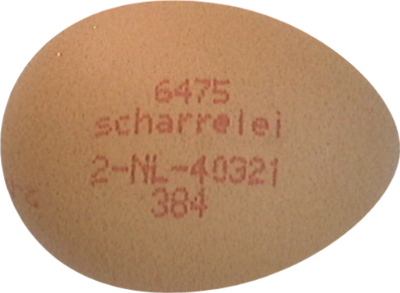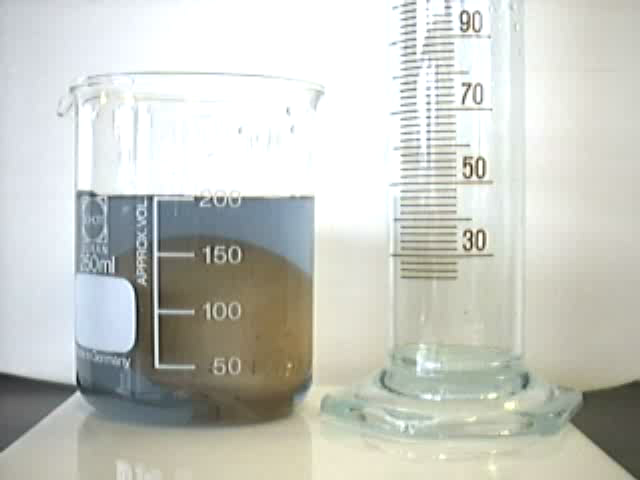Figure 1. The egg stamped 2-NL-40321.

Let me first describe some measurements that you can repeat on a real hen's egg. I consider the egg shown in Figure 1, which is stamped 2-NL-40321. The first digit indicates the farming method under which the hen that produced the egg was kept (2 = free-range egg). Then comes NL (the Netherlands) as country of origin and the registration number of the poultry farm where the egg came from. Later in the article I will use the measured data to evaluate geometric models of the shape of the egg.
Figure 1. The egg stamped 2-NL-40321.

You can weigh the egg on a kitchen scale. My result of 74 grams means that the egg belongs to the XL class (XL indicates “beyond 73 grams”); the egg packing is labeled accordingly “jumbo free-range egg”. With a Vernier caliper you can measure the length and width of the egg with great accuracy. My results are: length = 6.21 cm and width = 4.62 cm. A ruler actually suffices for most purposes. You can determine the perimeter at the widest part of the egg by winding a thread at this spot and by measuring the length of this piece of thread with a ruler. My result: the perimeter is equal to 14.7 cm, which corresponds to a circle with a diameter of 4.68 cm. If I wind the thread around the egg longitudinally, its length turns out to be 17.1 cm.
The determination of the volume of the egg is easy: just measure the amount of water displaced when the egg in placed in a glass beaker that can be read off with great accuracy. In case you do not have a calibrated measuring cylinder in which the egg fits, then you can help yourself with a non-calibrated glass beaker and a calibrated measuring cylinder (see Figure 2).
Figure 2. Experimental determination of the volume of an egg.

The procedure is as follows: fill the glass beaker with water until the water level indicates a volume of 200 ml with the egg below the waterline. Pour the water from the beaker into the calibrated measuring cylinder and read off the volume (134 ml). Calibrate the beaker by filling it without the egg until the water level of 200 ml is reached. Again, pour the contents from the glass beaker into the calibrated measuring cylinder and read off the (202 ml). The difference of the measured volumes is the volume of the egg: in my case 68 ml.
An experimental determination of the surface area of the egg’s surface without breaking the egg is not easy. You can think of the following method: cover the egg with pieces of kitchen foil such that as few wrinkles as possible are formed and then measure the total area of the pieces of kitchen foil. An alternative could be to paint the egg and then roll the egg on a piece of paper such that the area of the imprint corresponds with the surface area of the egg’s surface. But it remains tricky and this is the essence of the story told in this article. Experimental determination of quantities such as perimeter, surface area, and volume of an egg can be done, but in particular the determination of the surface area is difficult, error-prone and a real challenge. Inventing and carrying out measuring methods are no piece of cake! By the way, students can go in their investigation into the question whether it makes sense to repeat a measurement many times and compute the mean of the results.
A more indirect determination of the quantity is also allowed: via an adequate mathematical description of the shape of the egg you can find good estimations of surface area and volume of the egg on the basis of quantities that can be measured easily. The descriptive quality of such mathematical models can be evaluated on the basis of the previously found experimental data. In this way, a student may experience in an authentic way what it takes to do mathematical modeling of objects from daily life. He or she may also learn to keep in mind that mathematical modeling is often no alternative to empirical science.